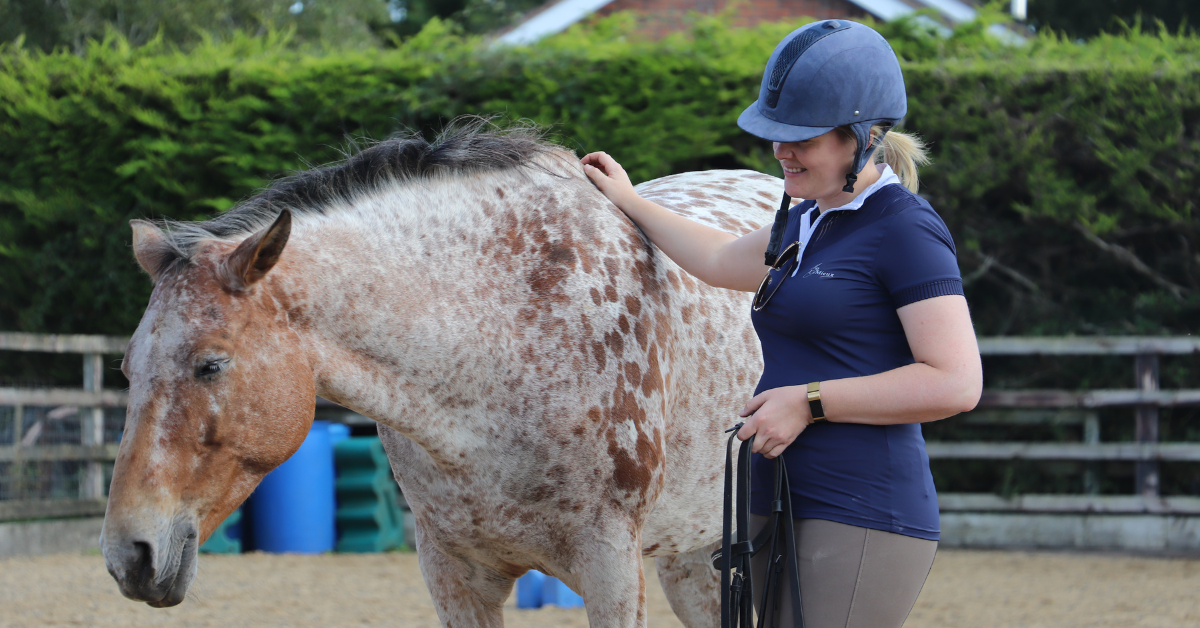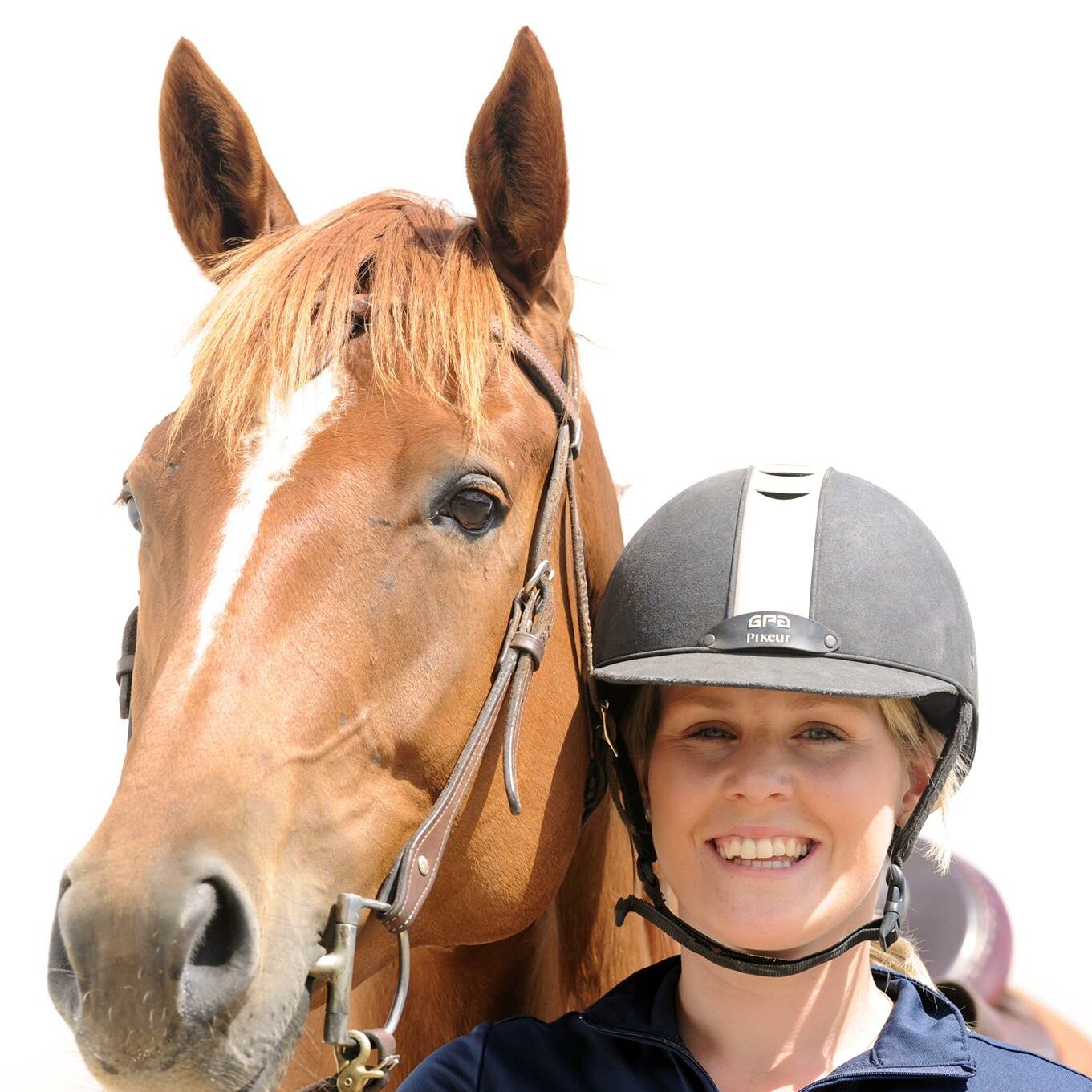In equestrian circles we talk a lot about confidence, losing it, finding it, developing it in ourselves & our horses. However, not all confidence is created equal & confidence means different things to different people. For one individual it may be to go round Badminton with a clear head, whilst feeling in control of the situation, to another it may be trailer loading their horse in a calm & safe manner or going on a hack that they enjoy & feel present to. When I work with clients & they say that they want to work on developing their confidence, I spend a lot of time unpacking this goal to ensure we have clarity around what confidence means to them & that we are both working towards the same outcome. The more specific a goal is the greater chance we have of achieving it.
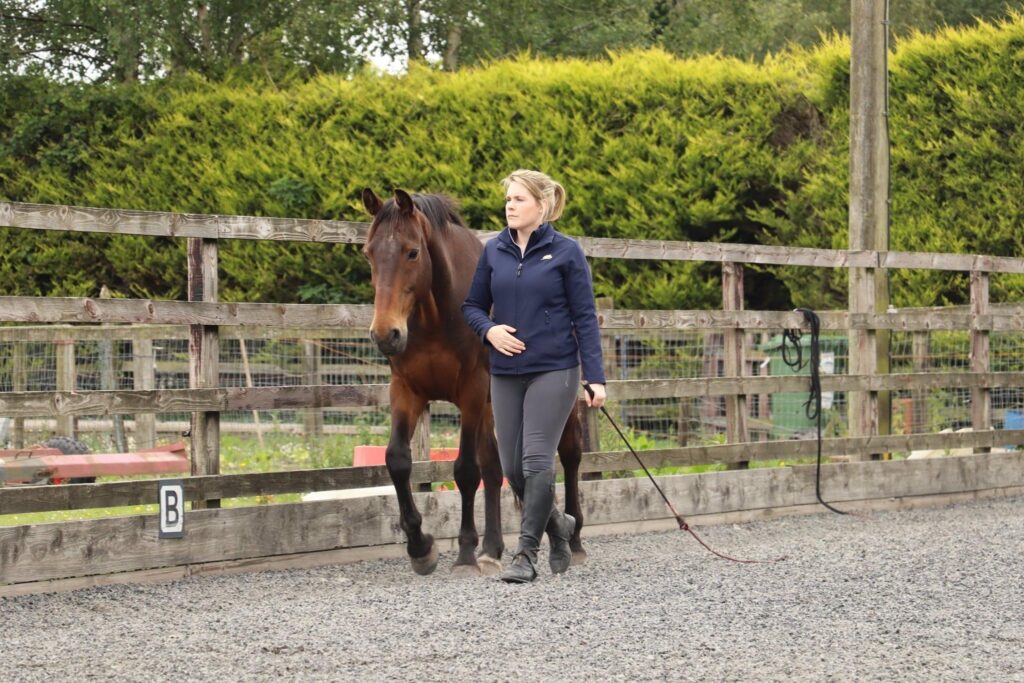
The two branches of confidence I focus on are mindset & skillset, we need concrete strategies & approaches for cultivating a calm mindset, but we also need to address our skillset in order to grow feelings of safety & confidence. We can positively visualize our interactions with our horses all day long, but if we don’t have concrete skills to keep us safe with our horses, the mindset element never has a chance to shine. The basic skill set of being able to keep your horse out of your space when required, being able to bend to a stop, establishing a standstill, having influence over all four feet & the ability to get off when you feel unsafe are all pre-requisites for developing & maintaining confidence.
Confidence an Ever-Changing Landscape:
Confidence is not permanent it is in fact an ever-changing landscape, there are so many variables that influence confidence level;
- What Happened before we Arrived at the Yard?
- What the Weather is Like?
- Riding in the Field vs. the Arena,
- Upcoming Events – A Clinic at the Weekend
- Worry that Photos or Videos might be Posted on Social Media.
These variables all have a huge impact on how confident we feel day to day with our horses, or even hour to hour. As a result, we need to view or confidence as operating on a continuum & as something we need to check in with regularly.
Stuck in the Past:
I often observe equestrians reminiscing about their bravery and carefree outlook to riding horses when they were young, these nostalgic tales are often told with a tinge of sadness & loss. An understanding of neuroscience can give us an insight into this phenomenon.
We struggle to recreate our childhood experiences mainly due to the advanced integration & functioning of our brains as adults. As we progress from adolescence to adulthood our frontal lobe which is responsible for executive function, forecasting, risk analysis, identifying cause and effect becomes more connected & integrated with other brain areas, which in turn gives us greater executive function (Pittman & Karle, 2015). One of the main differences between the adult & adolescent brain is that there is much less activity in the adolescent frontal lobes (Jensen, 2015). Increased executive function is very useful for many parts of our life, it causes us to be more risk averse in our decisions & approach to life including in our horsemanship. The forecasting skills of an adult are much sharper than that of an adolescent, we might have made lots of brave choices as a child or adolescent, but they were also possibly ill-informed decisions.
We are yearning for the impossible when we want to be as brave as we were when we were sixteen. However, this new knowledge of brain function can validate and explain our lived horsemanship experience. What we thought was diminishing confidence can in fact be a more integrated, sharper brain which we can use to our advantage in our horsemanship. We can avoid many of the falls and the hairy experiences we found ourselves in as children & develop a new more informed horsemanship approach.
Indulging the Inner Chatter:
Understanding how our brain operates can help us to understand our experiences & deal with them in a more compassionate way. Our emotional brain or limbic system is constantly on the lookout for physical or psychological threats to our safety. The amygdala that makes up part of the limbic system is often referred to as the smoke alarm of our brain, this gives you an indication as to how quickly & demonstratively this area of the brain can be triggered.
This emotional part of the brain is five times stronger than the more logical & rational frontal lobes (Peters, 2012). Our frontal lobes can easily be overpowered by our emotional brain & this requires us to have strategies ready to calm our emotional brain when we feel stressed or worried.
Check In:
Emotional literacy or awareness can be defined as not being surprised by our feeling & emotions, one way to do this is to check in with our bodies, do a quick body scan assess where tension or relaxation is present. Breathe into the stress or tension with long deep breaths, particularly focusing on a long exhale. This positively stimulates the vagus nerve that is constantly monitoring stress & relaxation levels within the body, we can influence our biochemistry by monitoring & moderating our breath (Patterson, 2020). By regularly checking in with our physical body it helps us to recognise patterns of how our stress & anxiety manifests physically, this may be tightness in your chest, sweaty palms, light headiness, nausea etc. We all have similar yet unique stress patterns & getting to know them will ensure you are resourced to deal with any feelings of discomfort.
When we become more attuned to our physical bodies, we can catch our discomfort sooner & address it before it demands to be attended to.
We can then start to ask ourselves some questions about why we feel a particular way. This is where we need to accept our answers, even if the answers seem foolish or unrealistic, they still need a fair hearing, in order to address our feelings of stress or tension. We can’t heal what we don’t address. This is also useful knowledge for trainers & instructors, the fears, or anxieties a client has may not appear realistic or grounded to you, but they are very real to the individual, hence why such thoughts & emotions need to be discussed & thrashed out (Peters, 2012).
It can be useful to write down our thoughts & feelings to see what is really going on. Not acknowledging these feelings will not make them go away, in fact they will become louder & more intrusive until we engage with them. When you see your fears & worries presented to you in written format they can seem more manageable & we can gain greater perspective as opposed to dealing with a tsunami of quick fire thoughts thrashing around in our heads.
Finding the Edge:
We will never find true confidence if we keep pushing ourselves over the emotional edge, this concept is the same for horses. We can’t push past our thresholds of confidence and our horses and expect long lasting positive effects. Of course, we can stretch ourselves and strive for daily improvements, but flooding ourselves with situations that are far beyond our emotional holding capacity will not hold up long term. These are the hard facts of developing confidence, it’s slow, not particularly glamorous and can feel like we will never feel confident again, but with compassion on the journey and the right support it’s possible.
When we are rebuilding confidence, we are working from the minus numbers on the confidence scale. I am always clear with my clients that there are no quick fixes, but on the other side of this process, is lasting positive change. We live in a society that praises speed, but many good things in life simply take time. A quote I often use to sum up my experience of life as an equestrian is;
“Isn’t it funny how day by day nothing changes, but when you look back everything is different?”
C.S. Lewis
Exposure Based Recovery:
In order to re-build our confidence, we need to create short, controlled exposures to the things we fear (Pittman & Karle, 2015). We need to get in & get out of the situation before overwhelm sets in, this may be seconds in the beginning stages. We are only looking for 1% improvement every session, this expectation ensures sustainability & long-lasting results. We can teach our brain alternative responses to seemingly frightening experiences, but it takes time & patience. Knowing that such re-training is possible is reassuring.
Our aim is to develop new neural pathways in the brain, but this requires an active coping strategy (Le Doux & Gorman, 2001). When you feel gripped by fear & begin to freeze you need to prevent immobilization from occurring, take a step back, remove yourself from the situation, do something other than freezing. This action helps to build new pathways in the brain and move past ingrained responses & reactions. It can also be useful to inform your instructor or coach of your needs & approach in these moments.
Furthermore, it’s important to focus on the controlled element of exposure-based recovery, it must be controlled & as safe as possible, in order to build trust with your emotional brain, you can’t build trust by forcing yourself to partake in repeatedly negative or dangerous situations. Naturally when engaging with horses, we cannot control every element, but we need to set the situation up for success as much as possible, this may include working with another more reliable horse in a supportive environment. You don’t always have to work with the horse that challenges your fears & anxieties, many skills can be developed away from such a horse & we can re-engage when we are more prepared.
If you feel you can’t rehabilitate the situation yourself it can be useful to use the services of a professional, instructor, trainer, coach etc. Maintaining & re-building confidence need not be a solo operation.
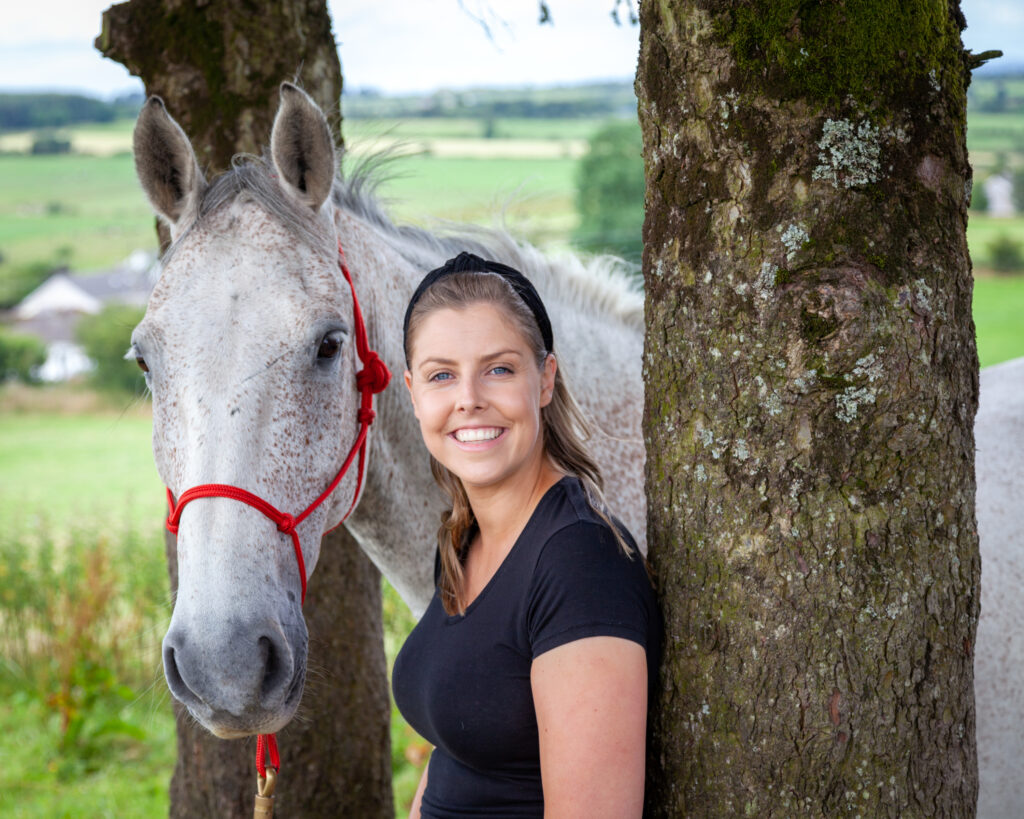
Client Experience:
Regaining my confidence in the saddle has been a ‘work in progress’ for me for the past three years. A couple of bad falls and tricky horses left me fearful of riding. However, with Helen’s guidance, I have made some great progress.The first step on this journey for me was to acknowledge my fear, and to notice when I felt it taking over.Once I was aware of my newfound fear, it was important for me to recognise my thresholds in the saddle. By being aware of my limits, I was able to make progress without pushing myself too far.Having a clear plan with both short term and long-term goals helps me to stay focused, and documenting these goals serves as a reminder of how far I have come.I also believe by being surrounded by a fantastic support system it has helped me feel safe and supported in my goals. By creating awareness of these small changes, my horse Jasper and I have made more progress than I could have ever imagined. Not only has it improved my own mindset in the saddle, Jasper’s confidence in me has grown tenfold. My horse who was once distrusting, skittish and spooky has relaxed in my company and become a confident partner.A few short years ago, my main goal was to ride Jasper in walk unaided, however we are now hacking out, riding in open fields, and working towards our goals of travelling to a local wood and riding on the beach. These things at one time seemed unimaginable to me, and I am so incredibly grateful for the skills I have learned as without them I may not have horses in my life today – Laura O’Connell
Conclusion:
Confidence is an issue that effects all equestrians regardless of age or stage. When we focus on developing our mindset & skillset simultaneously it gives us the best possible chance of developing & maintaining confidence in our horsemanship.
References
Jensen, F.E., (2015) ‘The Teenage Brain’, London: Vermillion.
Le Doux, J.E., & Gorman, J.M., (2001) ‘A Call to Action Overcoming Anxiety Through Active Coping’, American Journal of Psychiatry, 158:1953-1955.
Patterson, J. (2020) ‘The Power of Breathwork’, Massachusetts: Quatro Publishing.
Peters S. (2012) ‘The Chimp Paradox’ , London: Random House.Pittman, C.,M., & Karle, E.M., (2015) ‘Rewire Your Anxious Brain’ California: New Harbinger Publications.
